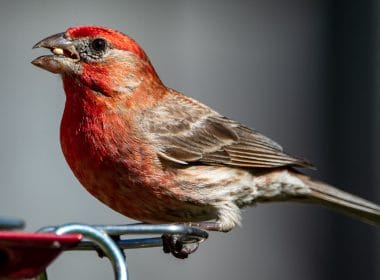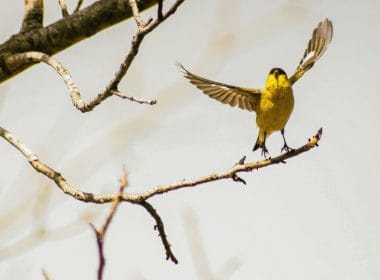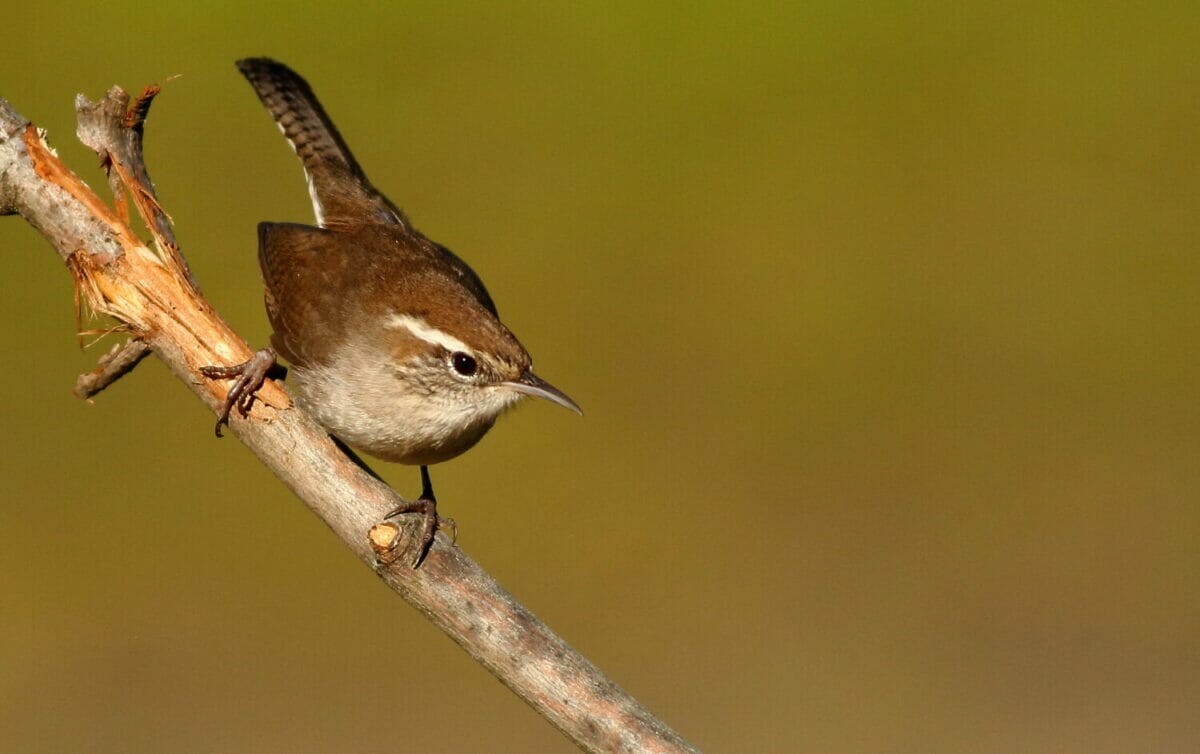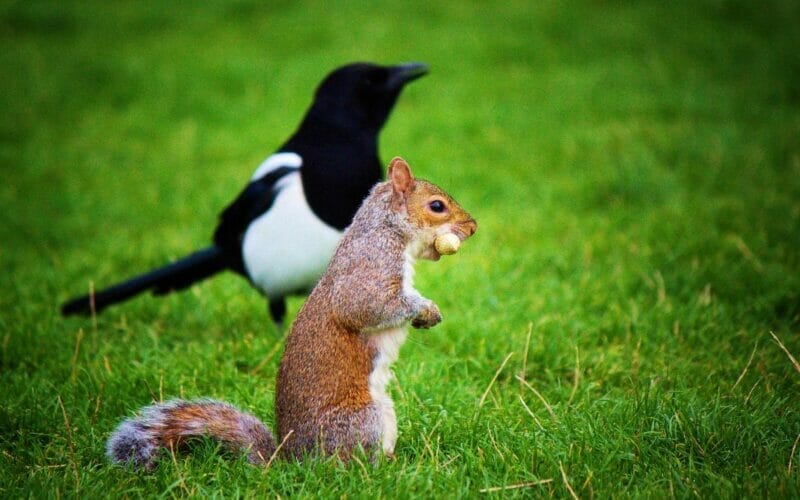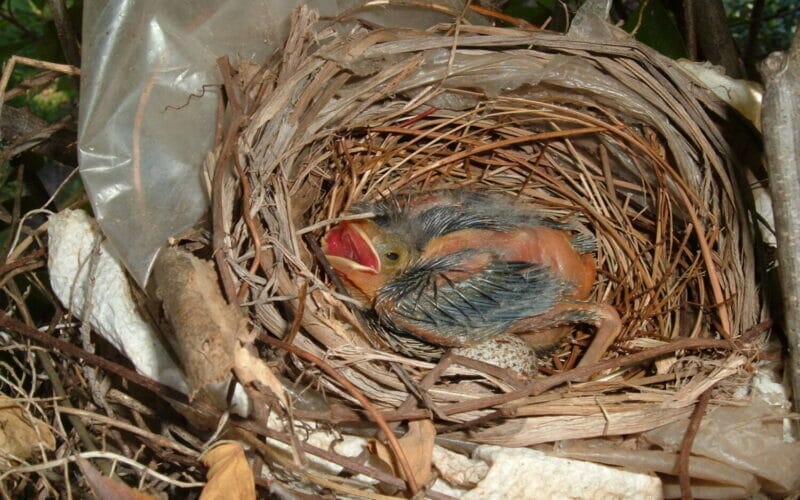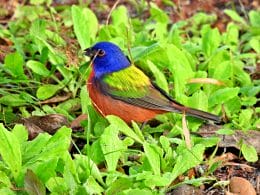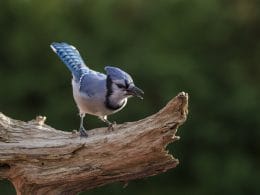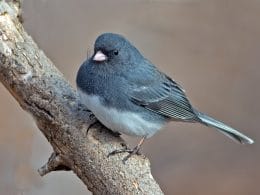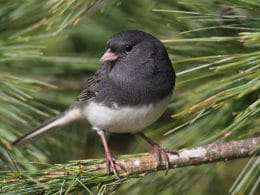The wren is the smallest and cutest of all the birds that come and land in my backyard. They are brown and you might always miss them in amongst the brown branches during the winter.
But you, like me, might be wondering what a wren eats daily. What food can you provide to lure them into your garden for observation? Well, the answer is that wrens eat quite a diverse range of things. Spiders, flies, berries, and seeds are all on the wren’s menu.
Is this all a wren eats in the wild? How does their natural diet compare to the things they might get in a feeder? What food can you lay out for them to encourage them to visit?
Well, I’ve gathered all the information that you’ll need on a wren’s feeding habits, as well as a few other wren facts.

What Is A Wren?
These are one of the smallest birds in the winged kingdom. They only measure around 10 cm in length and 13-17 cm in width. Their bodies are very round, they have long legs and wings and a pointed beak.
You can always distinguish a wren by its iconic brown coloring with a pale underbelly and dark wingtips. You can find these birds across Europe and the United States. There are also some varieties of these birds across Asia, Iran, and parts of Japan.
Younger wrens are redder in color than some of the adults. They have a long and slender bill that forms a great contrast to the other parts of the bird, which are much rounder. This has dark eyes and head. The male and the female of this species are very similar and there is very little to mark one out from the other.
Types of Wren
There are 11 wrens reported in the U.S. on eBird and the most common is the Carolina Wren.
Carolina Wren (Thryothorus ludovicianus)
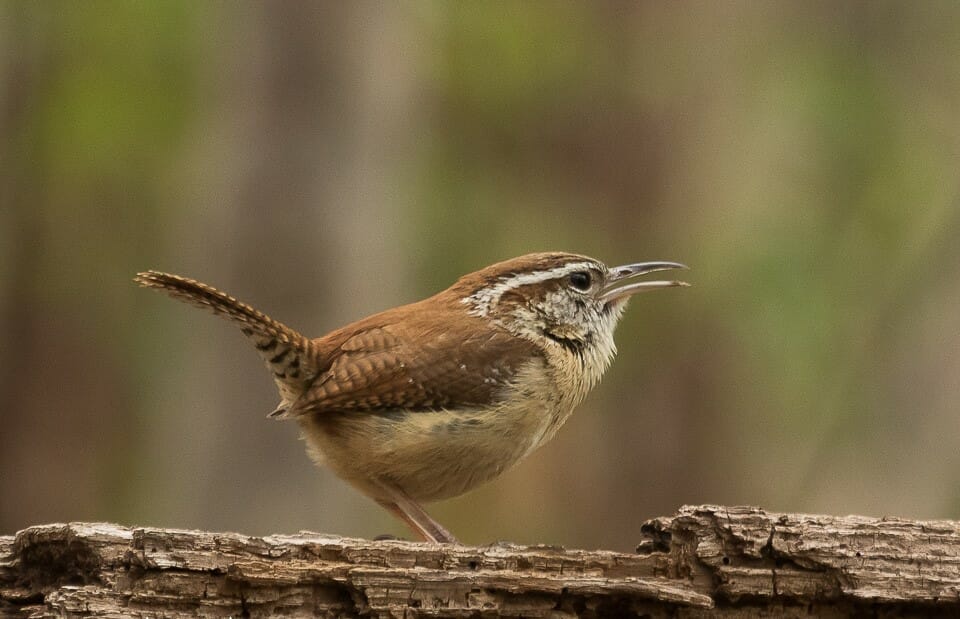
The Carolina Wren is a very common bush bird found across the eastern United States. Its long tail is usually cocked and helps identify the species from a distance. This is generally an easy bird to find as they are fairly sedentry and will visit bird feeders.
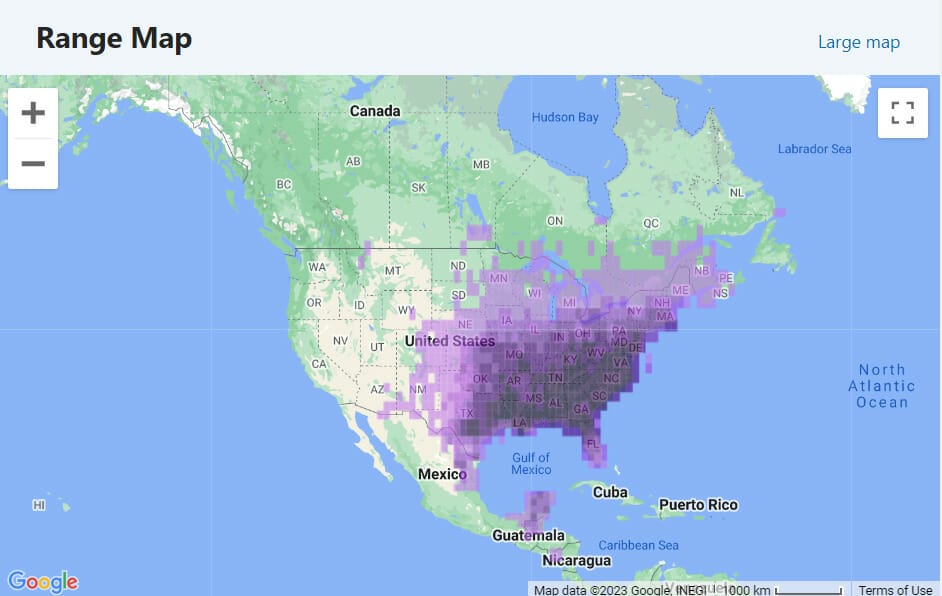
Other native Wrens
Marsh Wren (Cistothorus palustris)
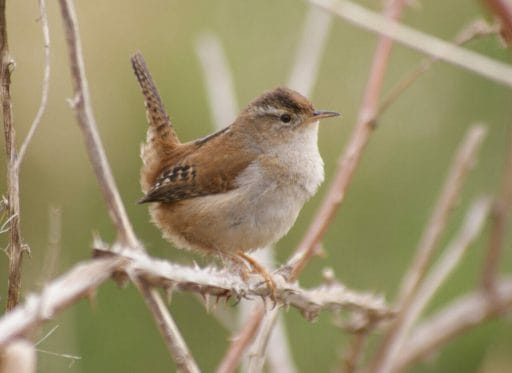
House Wren (Troglodytes aedon)
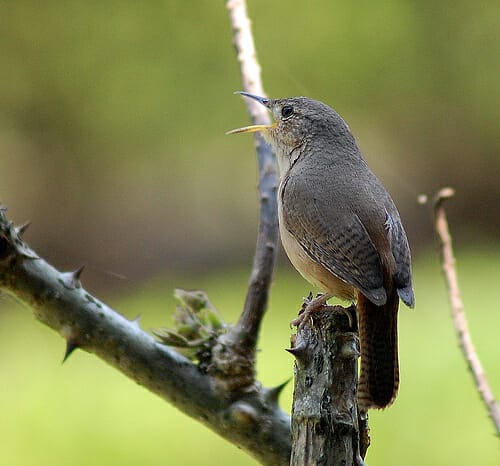
Canyon Wren (Catherpes mexicanus)
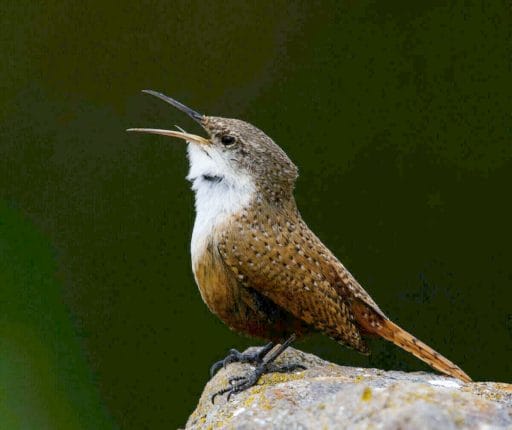
Winter Wren (Troglodytes hiemalis)
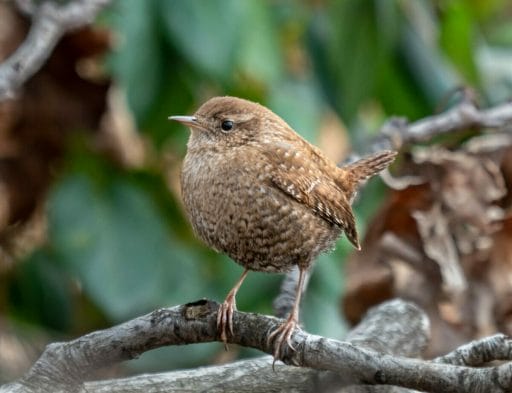
Bewick’s Wren (Thryomanes bewickii)

Cactus Wren (Campylorhynchus brunneicapillus)
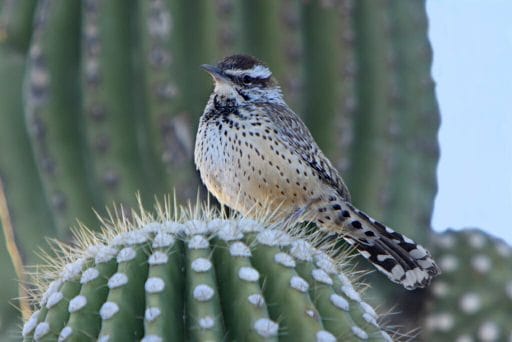
Rock Wren (Salpinctes obsoletus)
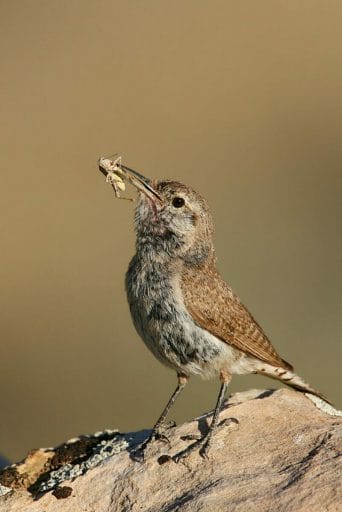
Pacific Wren (Troglodytes pacificus)
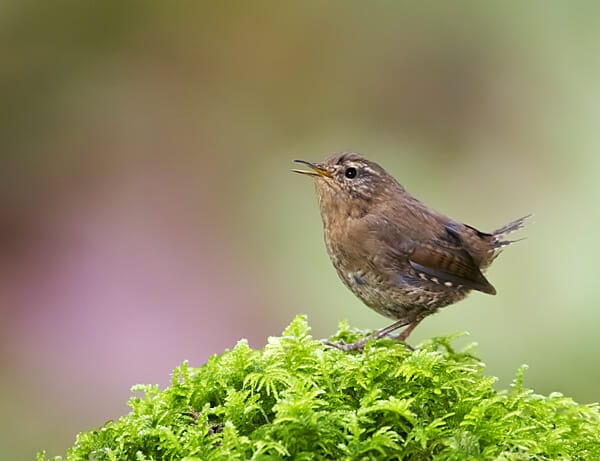
Sedge Wren (Cistothorus stellaris)
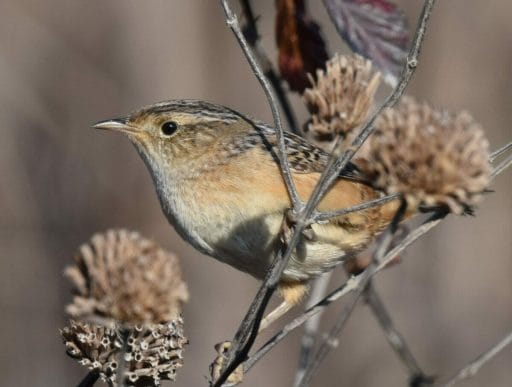
Sinaloa Wren (Thryophilus sinaloa)
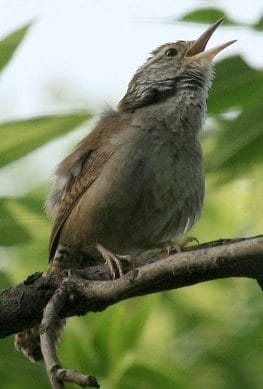
What do Wrens eat?
Wrens in the U.S. have a fairly basic diet. Here is a list of some of the things that a wren likes to munch on:
- Siders
- Flies
- Beetles
- Ants
- Caterpillars
- Tadpoles
- Young frogs
- Small fish
This is their main source of food. They will often spear these insects with their pointed beaks, using the flat of the beak to then ball up the insects ready to eat. However, wrens also employ this technique to mash up fruit with the flat side of their beak. They will often eat berries and seeds, although it is estimated that only about 5% of their diet is vegetable based.
Young wrens tend to eat insects brought to them by their mother and father. The insect meat will usually be mashed up and fed to the hungry chicks.
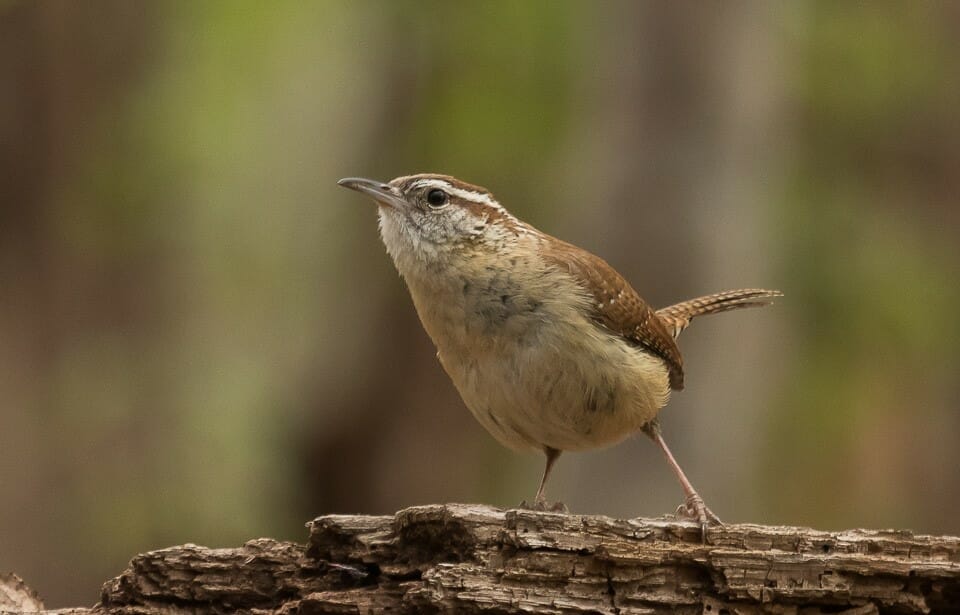
What are the breeding habits of Wrens?
Wrens will usually breed in forested areas where there are lots of fallen trees with holes in them. They might also make a nest in your backyard, which is another reason to put out feed for these birds. They will usually breed at the end of spring and the beginning of summer, from April through until July. They can either be monogamous or polygamous in their mating habits.
The male will usually build around 3 or 4 nests, which the female will then choose to raise their young in. The nest of the wren is a dome-shaped structure made from small twigs with an entrance hole in the side. It is padded out with lichen, moss and dead leaves. Once the female has chosen the nest, she will line it further with more moss and hair.
Wren eggs are speckled with red and brown spots. The female will usually lay anywhere between 4 to 7 eggs in one sitting. The female will then sit on these eggs between 10- and 12-days total. When the chicks are born, they have grey hairs on their head. They will be considered fledglings for the first 20 days of birth, after which they grow into juveniles.
They will get fed by their parents for around 40 days after they have been born. After 1 year, these young chicks will be ready to mate. They are given insects and berries, mimicking much the same diet as their parents would eat.
How can I spot a Wren?
Because of their brown plumage, it will often be very difficult to spy a wren in the wild. They are brown against a brown background, which makes them almost invisible. But you will be able to spot them from their distinctive mating song. This is a bird with a very loud voice!
If you put a feeder out in your backyard with nuts and seeds inside, then you can expect to see more wrens flocking to eat them. We would recommend against putting out dead insects, as wrens will often not eat them unless they are alive.
If you are out spotting wrens in the wild, then you’ll most likely see them in moorlands and woodlands, as this is where they forage and protect themselves from predators. However, wrens have also strayed into suburban areas, mostly for the abundance of food and to graze on artificial feeders.
What are threats to Wrens?
These little birds are not specially adapted to the cold weather and numbers tend to decline during the frostier months. This is also because there are fewer insects around for them to eat. You can try and alleviate the increasing cold for them by placing your feeder under a shelter.

Final Thoughts
I hope that my guide to wren eating habits has helped you better understand this precious bird and maybe given you a few ideas about what to stock in your feeder.
Make sure that you take care of these birds and try not to invade their habitat, which can often be found in dense foliage.
FAQ
Wrens are very tolerant of people, especially those that put out food for them. If you are still and quiet, you can watch them feeding.
Although there may be less insects around during the winter months, wrens will still find food. They will search for beetles, spiders and other crawling bugs in the leaf litter or on trees.
Yes, wrens will not turn down a free feed of seed. So put some out and see what happens.
